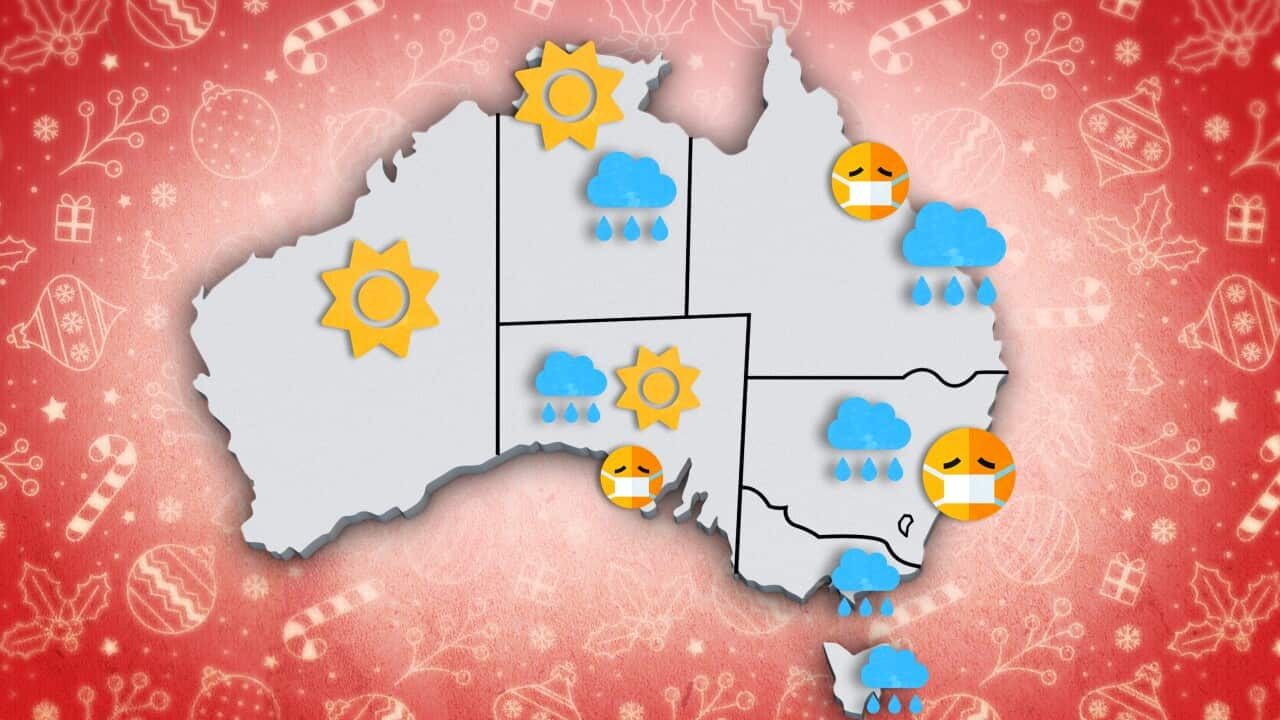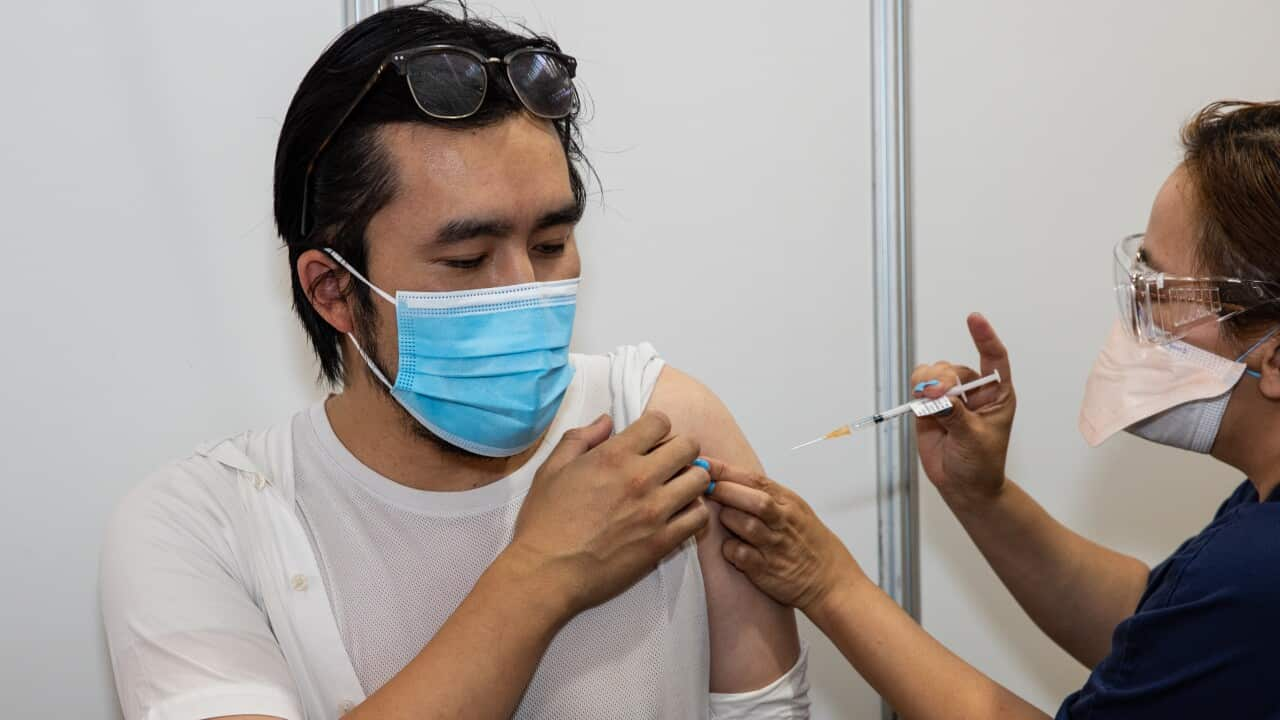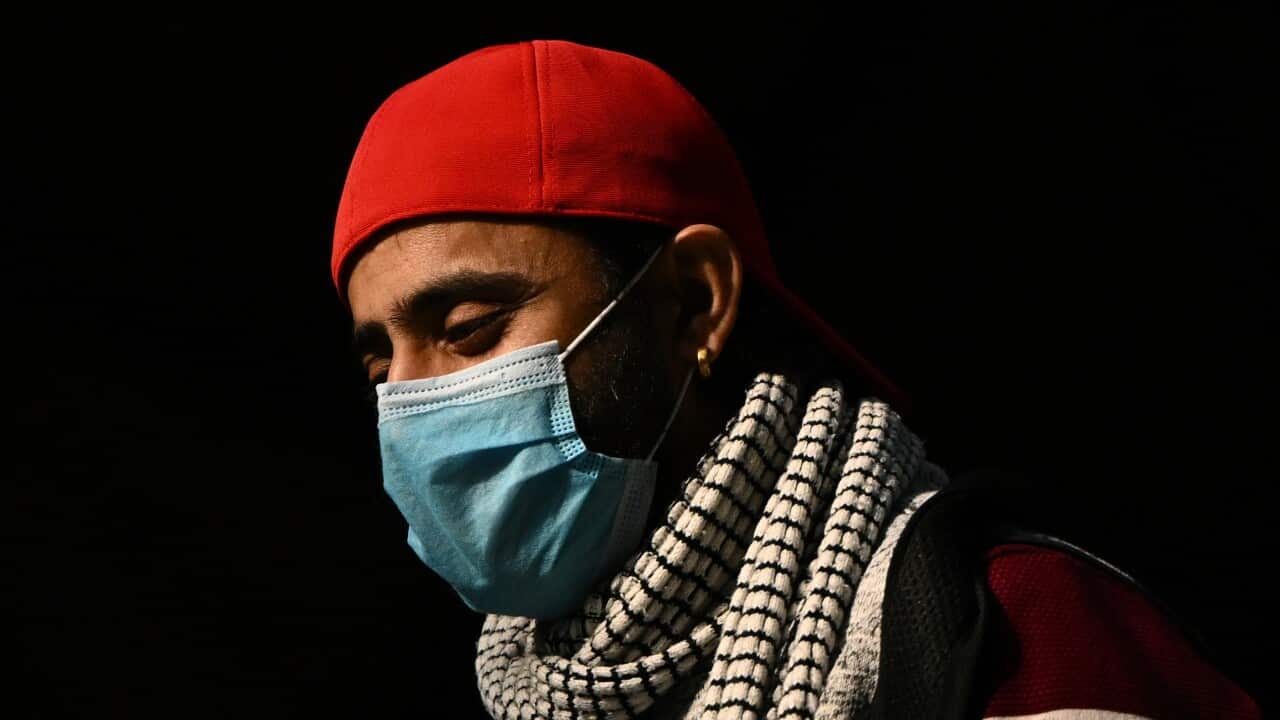After two years of pandemic lockdowns, many Australians were looking forward to a return to normal this year. But with cost of living increases, the emergence of new COVID-19 variants and another La Niña to dampen our spirits, there are concerns our festivities could be derailed again.
Queensland , and people are now recommended to wear masks indoors when they can't socially distance, if they're in healthcare facilities, or around older or vulnerable people.
There is though, some good news, with good weather predicted in some parts of the country and a bumper season expected for prawns and mangoes.
Will COVID-19 ruin Christmas?
COVID-19 cases in Australia are again on the rise amid the .
Figures from the Department of Health and Aged Care showed average daily case numbers in Australia were up by 38 per cent on 15 November compared with the week before.
In NSW, daily case numbers were 3,599 on 15 November (up by 46 per cent compared with the week before). Victoria had 2,887 cases (up by 31 per cent), Queensland had 1,320 cases (up by 74 per cent), Western Australia had 1,263 cases (up by 18 per cent), South Australia had 1,166 cases (up by 42 per cent), Tasmania had 328 cases (up by 24 per cent) and ACT had 194 cases (up by 19 per cent).
The Northern Territory was the only state or territory that experienced a decrease in average daily case numbers. It recorded 43 daily cases on 15 November, a decrease of 11 per cent.
Australia's chief medical officer Paul Kelly said more transmissible variants, dubbed the "grandchildren of Omicron", were circulating in Australia but while they were more transmissible, they were not more severe.
"In general, we're in a much better position than we were last year," Professor Kelly told Sunrise on 7 November. "There's plenty of tests and so forth around."

Authorities are not expecting to see a shortage of COVID-19 tests in the lead-up to this Christmas, compared to last year. Source: Getty / Diego Fedele
He pointed to the recent experience in Singapore, saying: "if it ends up being similar to Singapore, and I believe it will, then it should peak soon and drop quickly".
Associate Professor James Wood from the School of Population Health at the University of New South Wales, agreed and said he thought the east coast of Australia would experience a short, sharp COVID-19 wave that would be over by the end of November, and would likely be smaller than the BA.5 wave.
Professor Wood said Australia seemed to be following a similar trajectory to the wave in Singapore driven by the XBB variant, which started in late September and had peaked by late October. He noted cases there had already dropped back to late September levels.
"Their whole wave has unfolded over about eight weeks in total," Professor Wood said.
"It might take slightly longer here because of the larger, less connected population but I don’t think this will interrupt people’s Christmas plans and celebrations too much."
Clinical epidemiologist Professor Nancy Baxter of the University of Melbourne said she didn't think authorities would impose lockdowns or other tough measures.
"I think individual families are going to have to think about the risk to people who are at their Christmas table," she said "[And] to try and minimise the risk that COVID comes to that Christmas table."
Some states including , NSW and South Australia, have re-introduced some COVID-19 rules, including recommendations on the wearing of face masks in certain settings.
Individual families are going to have to think about the risk to people who are at their Christmas tableProfessor Nancy Baxter
Professor Baxter said the number one thing to do for those who weren't up to date with their boosters was to get any vaccine dose they were eligible for.
Wearing a mask in the week leading up to Christmas Day, and doing Rapid Antigen Tests (RATs) for the three days before, would also reduce the risk.
Being selective about social activities would also be a good idea. Professor Baxter said she would be heading home for Christmas and "what's on my social calendar in the week before is going to be pretty limited".
"I want to be able to get on that plane COVID free, I want to be able to see my 92-year-old mother and not infect her with COVID," Professor Baxter said.
People should also host Christmas dinner and other festivities outdoors if possible.
The Australian Medical Association has suggested people could work from home to further reduce their risk, and to do a RAT test prior to visiting people in aged care or attending Christmas parties.
When it comes to RAT testing, a table listing different brands and their effectiveness in detecting Omicron is being updated on the . Testing has been completed on at least 72 tests, with 23 results published so far.
What will the weather be like?
Bureau of Meteorology meteorologist Jonathan Howe said the first official forecast for Christmas Day won't be available until 18 December, a week before the holiday.
But Mr Howe said Australia will likely be experiencing La Niña conditions in December and this means there will be cooler daytime temperatures in southern Queensland, most of NSW, and in Victoria and South Australia.
"That means that Brisbane, Sydney, Canberra, Melbourne, Adelaide, through December [are] looking at cool and average [temperature] days," he said.
"Tasmania's looking warmer than average in December so that includes Hobart. Perth is 50/50 so looking quite average [for] daytime temperature, and Darwin's looking warmer than usual."

It might be a chilly Christmas this year. Source: Getty / Saeed Khan/AFP
"It does mean wetter than average conditions for Brisbane, Sydney, Canberra, Melbourne, Hobart," Mr Howe said.
"Adelaide [and] Perth are looking close to 50/50 in terms of average rainfall and so is Darwin."
Northern and central WA are the only areas looking at drier than usual conditions for December.
Cost of living increases on the cards including an interest rate rise
Christmas can be an expensive time of year and there is some mixed news for many Australians regarding the cost of living.
AMP chief economist Shane Oliver believes the Reserve Bank of Australia (RBA) is likely to raise the official cash rate by another 0.25 percentage points on 6 December, which will push people's mortgage payments up even further if banks choose to pass this on.

Christmas may feel more expensive for some this year. Source: AAP / Bianca De Marchi
"Leaving rates on hold in December is possible if upcoming wages, inflation and jobs data are soft, but seems unlikely because it would mean a three-month pause by the RBA as it then doesn’t meet in January, which would then risk allowing inflation expectations to rise further," Mr Oliver said.
When it comes to the Christmas table, the prices of some of our favourite summer fruits and seafood could be impacted.
Multinational bank Rabobank, which focuses on food and farming, has warned the availability and price of cherries and possibly other stone fruit such as peaches and nectarines, could be impacted by the three consecutive La Niña weather events.
Rabobank associate analyst Pia Piggott said a shortage would be more likely if rains continued in November as it would result in lower-quality fruit.
It's not all bad news though, it has been a good year for mangoes and papayas so the supply of these fruits shouldn't be impacted unless there are bad cyclones in northern Australia, where the majority of these fruits are grown.

Prawns should be plentiful this year thanks to La Niña. Source: Getty / James D. Morgan
School, king and tiger prawns should be in plentiful supply, starting from as low as $20 a kilo.
Strong supplies of mackerel (NT) and blue swimmer crab (SA), yellowtail kingfish (SA), southern calamari (SA), octopus (VIC) and king salmon (NZ) have also been seen.
"Customers can expect an abundance of family favourites, including barramundi, scallops, and oysters," market tour guide Alex Stollznow said.
"If price is a key consideration this year, consider choosing a different size or cut of your favourite species."
Other species such as sea urchin, leatherjacket, cuttlefish, gurnard, flounder and bonito could also be good options.
Would you like to share your story with SBS News? Email




